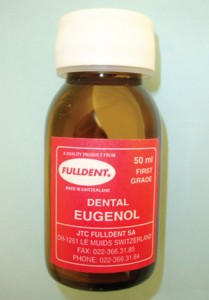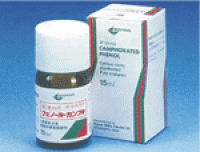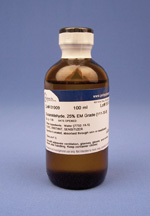Complete cleaning and shaping and thorough irrigation is essential before disinfecting the canal.
Disinfection of root canal (destruction of pathogenic M.O) is accomplished by intra canal medication
Uses:
Elimination of micro organism
Rendering the contents of canal inert
Prevention or control of post treatment pain
Objective is to reduce or alter the inflammatory response
To enhance anesthesia
Control of persistent P.A abscess( weeping canal)
Ideal requirements:
1.Effective germicide and fungicide
2.Non irritating to PA tissues
3.Stable in solution
4.Should have antibacterial effect for prolonged period
5.Active in presence of blood, serum and proteinaceous derivatives
6. Low surface tension.
7. Should not interfere with repair of P.A tissues
8. Should not stain the tooth
9. Should be capable of inactivation in a culture medium
10. Should not induce cell mediated response
ACCORDING TO GROSSMAN:
1) Essential oils- Eugenol
2) Phenolic Compounds
– Phenol
– Para Chlorophenol
– Camphorated Para Chlorophenol
– Formocresol
– Glutaraldehyde
– Cresatin
3) Halogens
-Na Hypochlorite
-Iodides
4) Quaternary Ammonium Compounds
amino acridine
1. Essential oils:
Essential oils are weak disinfectants
Eugenol is the chemical essence of oil of clove
It is slightly more irritating than clove oil and is both an antiseptic and anodyne
Clinically it is soothing to vital tissues
Studies have reported that eugenol inhibited intradental nerve impulses
2. Phenolic Compounds:
Phenol
Formaldehyde although not a member of the group is considered for convenience
Phenol and its derivatives are powerful disinfectants which do not penetrate deeply because they precipitate albumin
Derivatives of phenol are stronger antiseptics and toxins than phenol alone.
It is often available as camphorated solution, since it results is a less toxic phenolic compound because of a slower release of toxins
A) Phenol:
White crystalline substance and consists of 9 parts of phenol and 1 part of water in liquid form
It is a disinfectant and caustic
Being a protoplasm poison, it is used in endodontics for destroying pulp remnants
B)Cresol:
3 times more powerful than phenol as a disinfectant
less toxic, also precipitates albumin.
C) Formacresol
Non specific bactericidal medicament effective against aerobic and anaerobic m.o in rc
Combination of formaldehyde and cresol
Popularized in US by Buckley in 1905
Preparation of formalin and cresol is in1:2 or 1:1 ratio
Formalin is a strong disinfectant and causes widespread destruction of living tissue followed by a persistent inflammatory reaction
highly irritating effect on soft tissue
 D )PMCP: (Para Mono Chloro Phenol)
Substitute product of phenol in which chlorine replaces H+ atom from phenol
1% of aqueous solution for destroying M.O found in infected root canals
E) CMCP (Camphorated Mono Chloro Phenol)
Made of 2 parts of para-chlor- phenol +
3 parts of camphor
Camphor – vehicle and diluent
reduces irritating effect of pure PMCP
prolongs antimicrobial effect
It is used in the form of vapour forming intracanal medicaments. The vapors can pass through the apical foramen.
F. Glutaraldehydes
Colorless oil is slightly soluble in water and thereby has a slight acidic reaction.
Strong disinfectant and fixative
It does not produce any immunologic response.
Recommended concentration is 2%
G. Cresatin / metacresyl acetate
It is the acetic acid ester of metacresol
It is antiseptic, analgesic and fungicidal agent.
Its antibacterial effect in enhanced because of its low surface tension and effect is prolonged because of low volatility.
Calcium Hydroxide:
Introduced by Hermann in 1920
Highly alkaline [pH 11to 12.5], so M.O cannot thrive
It dissociates into highly interactive OH- thus causing tissue dissolution.
It is a slowly working medicament and hence placed
in the canal for a week.
It is either available in paste form or is mixed with saline and then coated to the canal walls.
It is mainly indicated in cases of weeping canals.
N2:
Introduced by Sargenti
Compound containing Para formaldehyde as its primary
ingredient
Contains:
Paraformaldehyde
Phenylmercuric borate
Eugenol,
Additional ingredients like lead, corticosteroids,
Antibiotics
It is claimed to be both ICM and a sealer
N2 has a permanent disinfectant action and unusual antimicrobial properties, have been denied by the council on dental therapeutics of the American Dental association
The antibacterial effect of N2 is short-lived about- a week to days.
Halogens:
Includes chlorine and iodine containing compounds.
Disinfectant action of halogens is inversely proportional to their atomic weights.
Chlorine with lowest atomic wt has greatest disinfectant action.
Chlorine disinfectants are unstable.
Hypochlorite was first used by semmelweis in 1847 as a hand disinfectant.
This initial use of potassium hypochlorite was substituted by sodium hypochlorite by Carrel and Dakin for wound disinfection.
Mechanism of action:
When hypochlorite contacts tissue proteins, nitrogen, formaldehyde and acetaldehyde are formed.
The peptide links are broken up and this dissolves the proteins. During the process hydrogen in the amino groups (-HN-) is replaced by chlorine (-NCL-) there by forming chloramines, which plays an important role in antimicrobial effectiveness.
Thus necrotic tissue and pus are dissolved and the antimicrobial agent can better reach and clean the infected areas.
Temperature significantly improves the antimicrobial effect of sodium hypochloride
IODIDES:
Iodine is highly reactive and combines with proteins in a loosely bound manner.
It destroys organisms by forming salts
2% solution is recommended in the form of KI
Antibacterial effect is of short duration
Quaternary ammonium compounds
They are compounds that lower the surface tension of solution
Mildly effective disinfectants
They are colorless,odorless compounds and effective in alkaline medium
Mechanism of action is as follows: the “Quats†are positively charged and the microorganisms are negatively charged thus a surface active effect in which the compound clings to the microorganism and reverses the charge
Eg: alkyl dimethyl benzyl aluminium chloride
Nitrofurans
Example : Nifuroxime
Antifungal agent
Pale yellow solid substance that is slightly soluble in water.
It is stable in aqueous- solution for several months and is effective against candida albicans
4 Antibiotics:
Eg : Poly antibiotic paste (PBSC)
Grossman derivative –on the basis of in vitro experiment and clinical evaluation
P penicillin (G +ve organisms) 1lakh units B bacitricin (resistant organisms) 10000 units
S streptomycin (G –ve organisms) 1 gm
C caprillate Na (yeasts) 1gm
( if replaced by nystatin ,it is PBMN)


